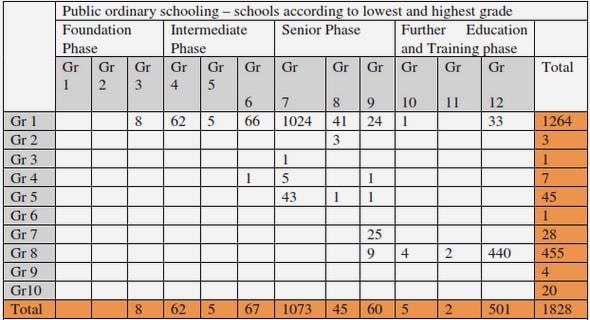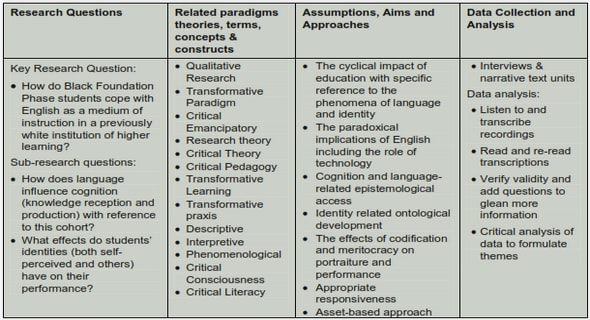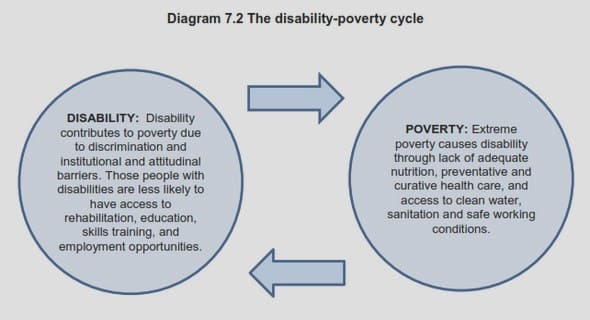Get Complete Project Material File(s) Now! »
CHAPTER 3: WORK ENGAGEMENT IN THE CONTEXT OF OPEN DISTANCE LEARNING ACADEMICS
INTRODUCTION
Work engagement has increasingly become an area of interest in the study of employee behaviour at the workplace. Its influence on an employee’s work tempo, commitment, energy, effort and attitude has received a lot of attention from consultancies, academics, human resources practitioners’ and organisations. In the contemporary world of work, for companies to compete effectively, they should not only focus on recruiting the best brains or highly skilled work force, but should create a conducive working environment that inspires employees to apply their full potential and capabilities to their work. This chapter addresses the conceptualisation of work engagement and the major models of work engagement, which are affective shift, Job characteristics and the Utrecht work engagement. The causes of work engagement, particularly among ODL academics, would be investigated. The demographic factors that impact on work engagement in distance learning universities, as well as the implications of work engagement in the context of ODL academics, and the discipline of human resource management, will be explored.
This chapter will address the following research questions:
Research question 1
How is the construct of work engagement in ODL academics conceptualised and explained by theoretical models in the literature?
Research question 2
How does work engagement of groups in the ODL context differ for respective socio-demographic variables (age, gender, educational qualification, job title, administrative position, work experience and employment status) as explained by literature?
HISTORICAL DEVELOPMENT OF WORK ENGAGEMENT
Kahn (1990) is credited for making inroads in the study of work engagement as a key component of human behaviour at the workplace (Bakker & Albrecht, 2018). He improved Goffman’s (1961) role theory, which stated that individuals on different occasions have attachments and detachments towards their role performances. Drawing some inspiration from Goffman’s (1961) work, Kahn (1990) then identified a construct on the behaviour of role playing in a work environment which he called work engagement (Van Wingerden et al., 2017). Kahn (1990) defined work engagement as the state of mind of an individual’s work role contexts culminating in physical, as well as cognitive and emotional role execution. Alderfer (1972) and Maslow (1943), view each individual as being in need of self-expression and ownership of his or her roles at work. Their views have heavily influenced Kahn’s concept of work engagement (Bakker & Demerouti, 2017).
Kahn (1990) studied how people at the workplace ended up being engaged or disengaged by elaborating on the three psychological conditions. These are meaningfulness, safety and availability (Mone & London, 2018). Meaningfulness is associated with the feeling that an individual receives something commensurate with his effort based on tasks, assignments, roles and interactions. On safety, he refers to it as an individual who is able to work without fearing the possibility of negative consequences to his status at work. Individual and group relationships, as well as intergroup dynamics influence that. On availability, Kahn (1990) implies that each individual has a certain extent of physical, emotional and psychological resources that are all needed for each job. Other researchers at the time explored these dimensions. In one study, May, Gilson and Harter (2004) validated Kahn’s findings, and their results showed that meaningfulness, safety and availability were all strongly significantly related to work engagement. In addition, the authors established that job enrichment together with role fit, were able to predict meaningfulness of work. Cordial supervisor relations together with rewards were able to predict safety, whereas the availability of resources predicted availability.
Kahn’s (1990, 1993) studies also identified work engagement as a key multi-faceted construct having three dimensions. These are vigor, dedication and absorption 80 (Breevaart, Bakker, Demerouti & Derks, 2016; Gonzalez-Roma, Schaufeli, Bakker & Lloret, 2006). These dimensions are further covered in detail in this chapter. According to Bakker and Albrecht (2018), the understanding of work engagement is largely attributable to the two early theoretical frameworks developed by Kahn (1990) and Maslach, Schaufeli and Leiter (2001).
DEFINITION OF WORK ENGAGEMENT
Work engagement is a positive, self-fulfilling, job-related state of mind, epitomised by vigour, dedication and absorption (Gagne, 2014; Schaufeli & Bakker, 2010). Rothbard (2001) refers to work engagement as a psychological presence that is composed of two major components namely, attention and absorption. Attention relates to the amount of time that an employee spends on his role(s). Absorption is the degree of being immersed in a particular role, as well as the level of concentration given to that role. Both definitions show the importance of employees’ psychological connection with their work. The major difference is that the first definition accommodates the three major sub-dimensions of work engagement which are vigour, dedication and absorption (Schaufeli & Bakker, 2010), whereas the second one, considers absorption only, which should be complimented by attention (Rothbard, 2001).
It is important to also highlight that the terms employee engagement and work engagement are different, despite some authorities saying they can be used interchangeably (Bakker & Schaufeli, 2015; Mone & London, 2018). Work engagement refers to the relationship of the employee with his work only, whereas employee engagement tend to also include the relationship with the organisation.
Work engagement major sub-dimensions
These were raised by Schaufeli and Bakker (2010) and are briefly explained as follows:
Vigour
Vigour is characterized by an individual who exhibits high levels of energy, mental resilience and the desire to invest lots of effort in his work as well as persevering even under difficult circumstances.
Dedication
Dedication is denoted by strong involvement in one’s work culminating in feelings of experiencing enthusiasm, relevance, inspiration, pride and a sense of significance.
Absorption
Absorption is epitomised by having difficulties to detach oneself from work because of total concentration and happily engrossed in such work and time is seen to be ‘flying’.
The above three sub-dimensions will be explained in detail by the Utrecht work engagement model on 3.4.3. From the above it is evident that work engagement is connected to all kinds of positive outcomes for any organisation (Bakker & Albrecht, 2018). Some of the positive outcomes of work engagement are:
(i) Work engagement is related to better performance by the individual, group and entire organisation.
(ii) High levels of work engagement are related to a high financial turnover (Xanthopoulou, Bakker, Demerouti & Schaufeli, 2012).
(iii) Work engagement promotes personal initiative.
(iv) Work engagement enhances organisational commitment.
(v) Work engagement causes low turnover intention among employees since they are satisfied with their work leaving minimum chances of likely to leave their jobs.
(vi) Work engagement enhances customer satisfaction and loyalty.
(vii) Work engagement is also linked to individual health outcomes. If workers are full of energy, they are less likely to develop negative effects that adversely affect their health.
According to Chen (2017), as well as, Bakker, Demerouti and Xanthopoulou (2012), work engagement also enhances the following positive behavioural aspects among employees:
(i) treating each employee as an essential member of the team (organisation) who focuses on clear goals.
(ii) feeling being trusted and empowered by receiving frequent and also constructive feedback that help in developing new skills.
(iii) feeling being thanked, respected and being recognised for achievement.
(iv) employees having a sense of pride and loyalty arising from working for the organisation.
(v) instilling positive attitudes and behaviours among employees leading to improved business performance.
(vi) capitalising on the employees’ acquired knowledge and ideas in order to improve the organisation’s products and services by promoting and supporting innovativeness.
(vii) an employee being an ambassador and advocate of the organisation to other key stakeholders like users, clients, suppliers and customers.
(viii) an employee developing a culture of going beyond ‘’the call of duty’’, for example, going the extra mile to complete an assignment or task even after normal working hours.
(ix) inculcating a sense of deeper commitment from employees culminating in reduced staff turnover, accident rates decline, fewer leave days’ uptake reduction of conflicts and grievances whilst productivity increases.
Work engagement captures how workers perceive and experience their work in terms of being stimulating and energising (Bakker, Rodriguez-Munoz & Sanz Vergel, 2016; Salanova & Schaufeli, 2008). This should determine the degree to which one can commit time, effort and input (the vigour component). There is also the desire for meaningful pursuit of a goal (the dedication component). Lastly, there is the desire to be involved and fully focused (Gonzalez-Roma et al., 2006). Employees should be psychologically connected to their work. They should have a clear understanding of their roles and expectations so that they remain focused. They should be determined and be able to invest themselves wholeheartedly in their roles. They should be proactive and committed to excellent quality performance. This calls for employees who naturally are engaged with their roles and work (Bakker & Leiter, 2010; Wright et al., 2015).
For the above to occur, engaged organisations should have clear, strong, inspirational and authentic values (Chen, 2017; Woo, 2014). There should be clear evidence of the existence of trust and equity based on mutual respect that accommodates the two pronged promises and commitments of both the employers and employees, which should be understood and fulfilled. Work engagement cannot be accomplished by using a mechanistic approach, which attempts to extract discretionary effort by diluting and manipulating employees’ commitment and emotions. Such attempts are quickly noticed by employees who usually then become cynical and disillusioned (Travaglianti, Babic & Hansez, 2016).
Two key variables of work engagement
There are two key variables, namely job and personal resources that drive work engagement (Breevaart et al., 2016; Demerouti et al., 2015). Table 3.1 gives a synopsis of these.
CHAPTER 1: OVERVIEW OF THE SCIENTIFIC RESEARCH
1.1 INTRODUCTION
1.2 BACKGROUND AND MOTIVATION TO THE STUDY
1.3 STATEMENT OF THE PROBLEM
1.4 AIMS OF THE RESEARCH
1.5 STATEMENT OF SIGNIFICANCE
1.6 PARADIGM PERSPECTIVES OF THE RESEARCH
1.7 RESEARCH DESIGN
1.8 RESEARCH METHODOLOGY
1.9 DELIMITATIONS OF THE STUDY
1.10 DEFINITION OF KEY TERMS
1.11 ORGANISATION OF THESIS
1.12 CHAPTER SUMMARY
CHAPTER 2: WORK STRESS IN THE CONTEXT OF ODL ACADEMICS
2.1 INTRODUCTION
2.2 HISTORICAL DEVELOPMENT OF WORK STRESS
2.3 DEFINITIONS OF WORK STRESS
2.4 CONCEPTUALISATION OF WORK STRESS MODELS
2.5 MOST APPLICABLE WORK STRESS MODEL
2.6 CAUSES OF WORK STRESS IN AN ODL UNIVERSITY
2.7 MANAGING WORK STRESS.
2.8 EMERGING CHANGING WORK ROLES IN ODL
2.9 DEMOGRAPHICAL FACTORS THAT INFLUENCE WORK STRESS
2.10 IMPLICATIONS OF WORK STRESS IN THE CONTEXT OF ODL AND HUMAN RESOURCES MANAGEMENT
2.11 CHAPTER SUMMARY
CHAPTER 3: WORK ENGAGEMENT IN THE CONTEXT OF ODLACADEMICS
3.1 INTRODUCTION
3.2 HISTORICAL DEVELOPMENT OF WORK ENGAGEMENT
3.3 DEFINITIONS OF WORK ENGAGEMENT
3.4 CONCEPTUALISATION OF WORK ENGAGEMENT
3.5 DRIVERS OF WORK ENGAGEMENT
3.6 BENEFITS OF WORK ENGAGEMENT
3.7 NEGATIVE EFFECTS OF WORK ENGAGEMENT
3.8 DEMOGRAPHICAL FACTORS THAT INFLUENCE WORK ENGAGEMENT
3.9 IMPLICATIONS OF WORK ENGAGEMENT IN THE CONTEXT OF ODL AND HUMAN RESOURCES MANAGEMENT
3.10 CHAPTER SUMMARY
CHAPTER 4: SERVICE DELIVERY IN THE CONTEXT OF ODL
4.1 INTRODUCTION
4.2 HISTORICAL DEVELOPMENT OF SERVICE DELIVERY
4.3 DEFINITIONS OF SERVICE DELIVERY
4.4 CONCEPTUALISATION OF SERVICE DELIVERY
4.5 CHALLENGES FACING ODL SERVICE DELIVERY
4.6 DEMOGRAPHICAL FACTORS THAT INFLUENCE SERVICE DELIVERY
4.7 IMPLICATIONS OF SERVICE DELIVERY IN THE CONTEXT OF ODL AND HUMAN RESOURCE MANAGEMENT
4.8 PERCEPTIONS OF ACADEMICS AND STUDENTS IN ODL SERVICEDELIVERY CONTEXT
4.9 INTEGRATION OF WORK STRESS, WORK ENGAGEMENT AND SERVICE DELIVERY
4.10 SUMMARY
CHAPTER 5: RESEARCH DESIGN AND METHODOLOGY
5.1 INTRODUCTION
5.2 OVERVIEW OF THE METHODOLOGY
5.3 DETERMINATION AND DESCRIPTION OF THE POPULATION AND SAMPLE
5.4 FORMULATION OF HYPOTHESES
5.5 SELECTION AND MOTIVATING THE MEASURING INSTRUMENTS
5.6 DATA COLLECTION PROCEDURE AND ADMINISTRATION OF THE RESEARCH INSTRUMENTS
5.7 DATA ANALYSIS
5.8 ETHICAL AND LEGAL CONSIDERATION
5.9 CHAPTER SUMMARY
CHAPTER 6: RESEARCH RESULTS
6.1 INTRODUCTION
6.2 RESPONSE RATE
6.3 DESCRIPTIVE STATISTICAL ANALYSIS
6.4 VALIDITY
6.5 RELIABILITY
6.6 CONSTRUCT DESCRIPTIVES
6.7 INFERENTIAL STATISTICS
6.8 INTEGRATION OF RESULTS
6.9 SUMMARY
CHAPTER 7: CONCLUSIONS, LIMITATIONS AND RECOMMENDATIONS
7.1 INTRODUCTION
7.2 CONCLUSIONS
7.3 LIMITATIONS
7.4 RECOMMENDATIONS
7.5 EVALUATION OF RESEARCH
7.6 REFLECTION ON DOCTORATENESS AND CONCLUSION
7.7 CHAPTER SUMMARY
LIST OF REFERENCES
GET THE COMPLETE PROJECT


